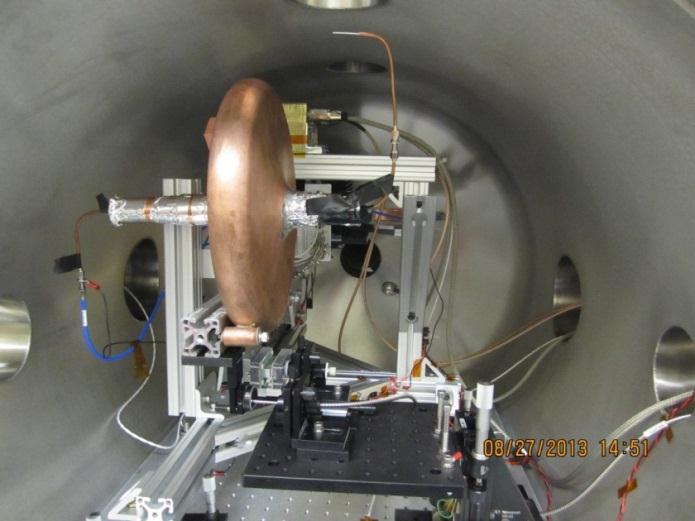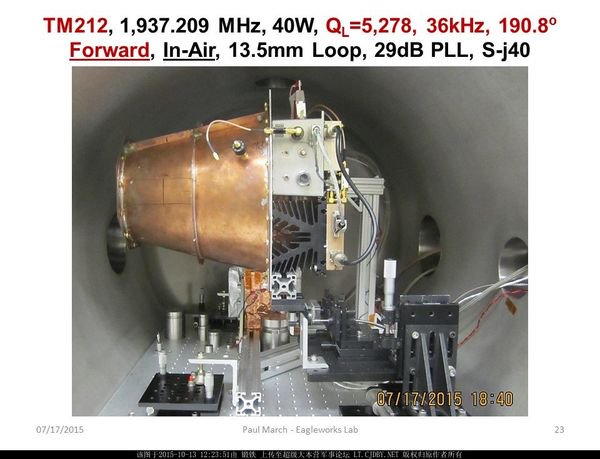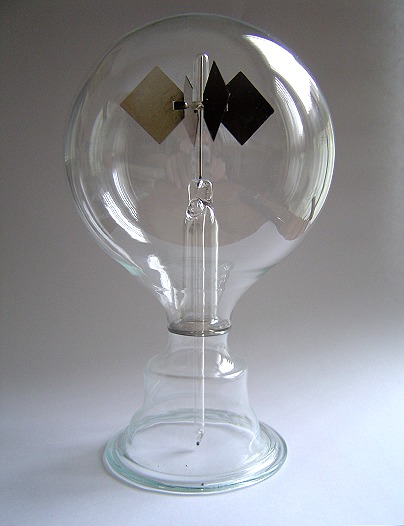|
Size: 4377
Comment:
|
Size: 4550
Comment:
|
| Deletions are marked like this. | Additions are marked like this. |
| Line 27: | Line 27: |
| || {{ attachment:Crookes_radiometer.jpg | | height=200 }} || The device reminds me of a paddle in a [[ https://en.wikipedia.org/wiki/Crookes_radiometer | Crooke's radiometer ]], also known as a light mill, another device with slightly more heat on one side than the other. A detailed explanation [[https://doi.org/10.1115/IHTC14-22023 | here ]].<<BR>><<BR>>A lightmill works because slightly hotter gas forms on the black side of the paddle, and flows around the edges to the white/shiny side. That flow produces a tiny thrust, which moves the paddle. This was first properly explained by [[ https://en.wikipedia.org/wiki/Osborne_Reynolds | Osborne Reynolds ]] in 1889, with quantitative refinements by [[https://en.wikipedia.org/wiki/Martin_Knudsen | Martin Knudsen ]] in 1910 and Albert Einstein in 1924. || | || {{ attachment:Crookes_radiometer.jpg | | height=200 }} || The device reminds me of a paddle in a [[ https://en.wikipedia.org/wiki/Crookes_radiometer | Crooke's radiometer ]], also known as a light mill, another device with slightly more heat on one side than the other. A detailed explanation [[https://doi.org/10.1115/IHTC14-22023 | here ]].<<BR>><<BR>>A lightmill works because ever-so-slightly hotter gas forms on the black side of the paddle, and flows around the edges to the white/shiny side. That flow produces a tiny thrust, which moves the paddle. This was first properly explained by [[ https://en.wikipedia.org/wiki/Osborne_Reynolds | Osborne Reynolds ]] in 1889, with quantitative refinements by [[https://en.wikipedia.org/wiki/Martin_Knudsen | Martin Knudsen ]] in 1910 and Albert Einstein in 1924.<<BR>><<BR>>Imagine what a 200°C temperature difference might do in the White experiment, even if the gas pressures are somewhat lower than an optimized light mill. || |
Anomalous Thrust
Fringe space fans flock to dodgy research; learning physics and engineering in order to exploit the wonders of proven scientific phenomena is too much like work, I suppose.
One bit of dodgy research is "quantum vacuum plasma thrusters", promulgated by Harold White's group at NASA's Johnson Space Center. There may be spooky new effects here, but their experiments are not nearly detailed or careful enough to actually measure them while ruling out more likely phenomena.
A paper here: Anomalous Thrust Production from an RF Test Device Measured on a Low-Thrust Torsion Pendulum
Their test devices are shown here:
Device 1 |
Device 2 |
|
|
28 watts, diameter 11 inches ~= 14 cm radius |
40 watts (17 W in abstract), estimated diameter 12 inches |
Estimated area 0.123 m2, 230 W/m² |
Distribution of heat uncertain, |
Shiny, estimated emissivity 0.1 |
Temperature probably similar |
230 = 0.1 * 4.567e-8 * ( T⁴ - (300K)⁴ ) |
|
⇒ T = 492K ≈ 220° C |
The devices will get very hot, emitting heat only by black body radiation, and thermal conduction to the rest of the apparatus (which will also get warm). Because the devices are shiny, their black body emissivity will be low; I'm guessing 10%. Note that Device 1 is anchored to the microwave source on the right; some heat will flow out the right side, so it will be colder than the left side.
I bet the much of the "anomalous thrust" would vanish if they were black. NASA Goddard has done some interesting work on ultra-black, high emissivity surfaces.
The experimental setup is messy. Nice stainless steel pressure vessel, but filled with outgassing materials. The authors describe a setup with two turbopumps (no cryopump or cold trap mentioned) that requires a few days to pump down to 5e-6 torr, or about 7e-4 Pascals. That is a poor vacuum for days of pumping, so something is outgassing. If the pressure sensor is near the pumps, and outgassing sources are closer to the device, then the pressure could be significantly higher there; perhaps a few milli-Pascals. The pumps are running during the experiment; if the experiment was clean, that would not be necessary.
For comparison, the Large Hadron Collider (LHC) maintains a 3 kilometer ring (and lots of side experiments) at 1 microPascal, and the Laser Interferometer Gravitational Observatory (LIGO) keeps two 4 kilometer long large-bore pipes pumped down to 0.1 microPascals. I used high vacuum systems for sputter-depositing niobium to make Josephson junctions as a graduate student at UC Berkeley in the early 1970s; cleanliness was essential.
|
The device reminds me of a paddle in a Crooke's radiometer, also known as a light mill, another device with slightly more heat on one side than the other. A detailed explanation here. |
Modern hypersonic aerodynamics emerged from the work of Reynolds and Knudsen. The detailed quantitative understanding of radiometers led to the design of rockets and reentry vehicles that got us to the Moon and Mars. Perhaps I am wrong, and there is a real "quantum thrust" effect here that will get us to the stars, but my guess is that the Johnson Space Center is struggling for existence now that they cannot put Americans into space. Goddard puts telescopes in space, and JPL puts landers on Mars; perhaps it is time to concentrate US space expenditures there.



